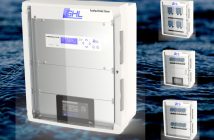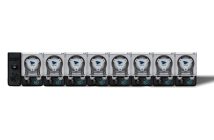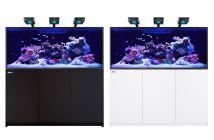Back in October, we got our paws on the Hydor Smart Wave water pump controller, and after a couple of months of use on our aquariums we’re finally ready to finalize our review. When first unboxed, we found the Smart Wave to be both simple to use and visually appealing. The controller has a total of two knobs, one to set the mode and one to set the duration, and how could it get any more simple than that? This simplicity allowed the controller to be put into use in under five minutes, and the controls were dialed in even more quickly. In terms of modes available to the controller, the Smart Wave can either be placed in a synchronous flow mode, where the two channels turn off and on at the same time, or anti-sync mode, where the two channels pulse off and on opposite of each other. A feeding mode is also available where the pumps turn off so the fish food isn’t blown all over the aquarium.
After thoroughly examining the controller, it was plugged in and powered up, with a pair of Koralia Evolution powerheads getting treated to the pulsing action. The pumps were placed on the shortest time cycle available for the pulses, which is 5-seconds, and the controller performed beautifully. The pumps cycled on and off, and the controller responded instantly to any changes we made to their the duration or the type of pulsing.
The one thing that concerned us at first was the hard start and stopping action the Smart Wave placed on the powerheads. We’ve heard horror stories in the past where pumps would simply get worn out too quickly or the propellers would start spinning backwards, but we didn’t experience any of this with the Smart Wave. This has a lot to do with design of the Koralia Evolution pumps, as they were designed specifically to prevent back-spin of the props when used on wavemakers, and they all worked flawlessly. We did notice a slight clicking noise when the pumps turned on, but any concerns we had with the noise were quickly squashed as it turned out to be very minimal and blends right in with the rest of the background noise of the aquarium. In fact, when the pumps are pulsing on our aquarium, we couldn’t hear anything from the Koralia setup. Again, this is a setup that we were really impressed with, and given the $70 price tag, it’s one that many aquarium keepers can easily afford.
What we liked:
- Inexpensive
- Easy to use right out of the box
- Simple functions with detailed instructions
- Built-in mounting hardware
- Sleek design
What we’d like to see:
- More channels for control, or at the very least more plugs
- A continuous flow mode to bypass the wavemaking
- Pulsing options below 5-seconds





